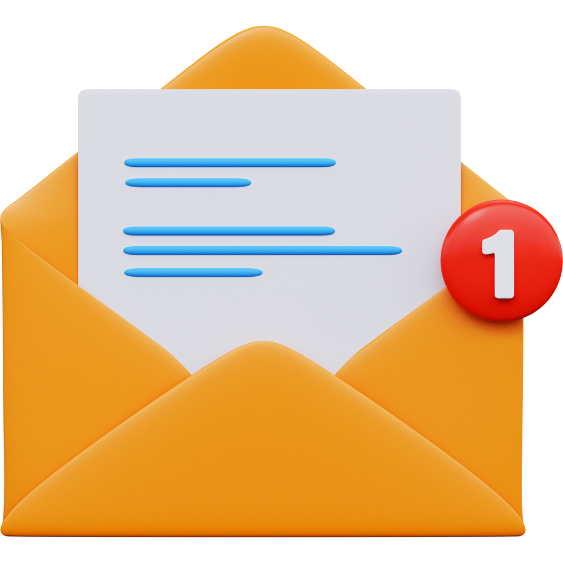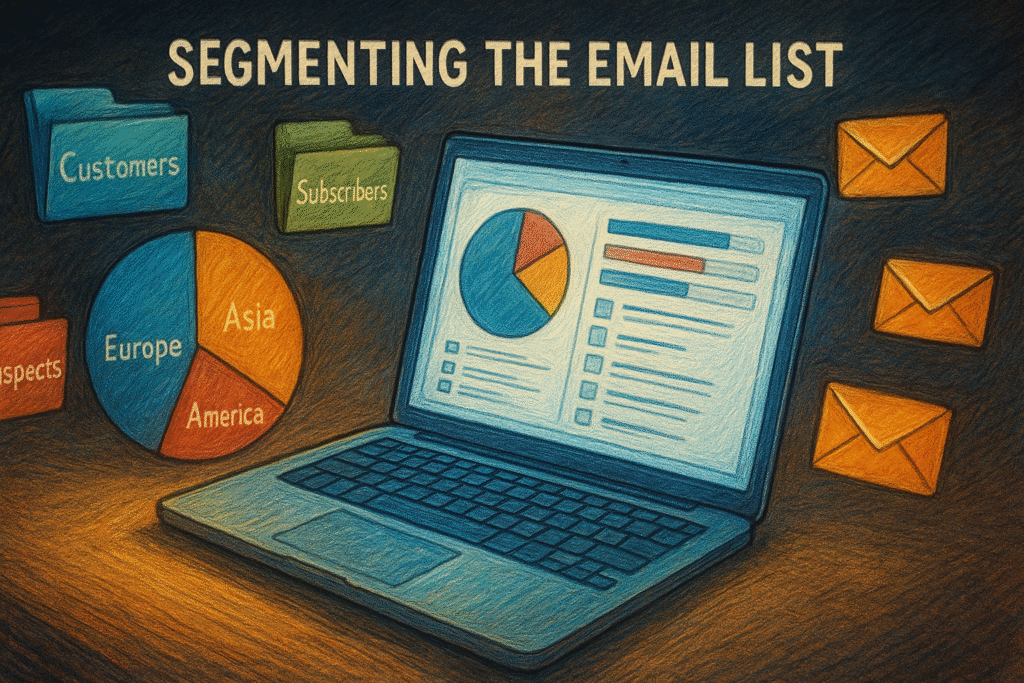Imagine this. You’re preparing for your college fest. You’ve got 500 students to invite. Now, you could stand outside the canteen with a megaphone (social media), OR you could directly send personalized WhatsApp messages to each student (email).
Which one works better? Obviously, the personal route.
That’s exactly why email marketing is still one of the most powerful digital marketing strategies—even in the age of reels, shorts, and viral trends.
For young professionals and students, understanding how to build and nurture an email list is like learning how to network smartly: instead of shouting in a crowd, you build lasting 1-to-1 relationships.
Let’s break this down, step by step.
Why Email Marketing Still Matters
Direct connection: No algorithms deciding who sees your message.
High ROI: For every ₹1 spent, email marketing can return up to ₹40.
Professional edge: Every company uses emails for sales, updates, promotions.
Ownership: Your social media followers belong to the platform, but your email list belongs to YOU.
In short: Social media is rented land. Email list = your own property.

Step 1: Start with the Right Tools
Don’t send bulk emails from Gmail; it’ll land in spam. Use proper email marketing tools.
Popular (and student-friendly) options:
Mailchimp (free for beginners)
ConvertKit (great for creators)
Sendinblue (affordable in India)
These tools help with templates, automation, and tracking.
Step 2: Build Your Email List (Without Being Spammy)
This is where students often go wrong. Buying random email lists is useless. It’s like trying to make friends by gate-crashing a wedding.
Instead, build your list organically:
Ways to Collect Emails
Lead Magnets- Offer something valuable in exchange.
Free e-book (“10 Social Media Hacks for Students”)
Discount coupon
Free webinar access
Signup Forms- Place them on websites, blogs, or even Instagram bio links.
Contests/Giveaways- “Enter your email to win free merchandise.”
Golden rule: Always ask for permission. No one likes surprise spam.
Step 3: Segment Your List
Not every subscriber is the same. Segment = divide your email list based on interests or behavior.
Students vs. professionals
Customers vs. prospects
Engaged (clickers) vs. inactive (silent readers)
Example: A digital marketing institute should send different emails to “students exploring courses” and “students already enrolled.”

Step 4: Craft Emails People Actually Read
No one likes boring, long, or salesy emails. Keep them:
Short & crisp (like a friendly WhatsApp, not a lecture).
Personalized (“Hi Riya,” instead of “Dear Customer”).
Value-driven- tips, hacks, or updates that actually help.
Visually appealing- use simple templates, not plain text walls.
Subject lines matter the most. If your subject line sucks, nobody opens your email.
Example: Instead of “Digital Marketing Newsletter #21,” write “3 Social Media Tricks to Try This Weekend.”
Step 5: Nurture, Don’t Spam
Building an email list is like making friends. You don’t bombard them with constant requests. You build trust first.
Email Types to Send:
Welcome Email- “Thanks for joining! Here’s a free guide.”
Educational Emails- Tips, tutorials, hacks.
Engagement Emails- Quizzes, polls, contests.
Promotional Emails- Discounts, offers, course enrollments.
Rule of thumb: 80% value + 20% promotion.

Step 6: Automate Smartly
Why send every email manually? Tools let you set up automations.
A new signup- Instantly receives welcome mail.
A user clicks on a product- Receives a follow-up email.
Someone hasn’t opened emails in 30 days- Gets a “We miss you” mail.
Automation = less work, better results.
Step 7: Track & Improve
Don’t just send emails blindly. Track metrics:
Open Rate- How many of your mails were opened
CTR (Click-Through Rate)- How many clicked links.
Conversion Rate- How many actually bought/enrolled.
Unsubscribes- If too high, you’re spamming.
Think of it like exam results. If marks are low, change your study strategy (in this case, your emails).
Mini Case Study: Arjun’s Side Hustle
Arjun, a B.Com student, started selling digital planners online.
He offered a free “Student Productivity Guide” in exchange for emails.
Within 2 months, 500 students subscribed.
He nurtured them with weekly productivity hacks.
Later, he pitched his paid planner- 50 people bought.
Lesson: First give value, then ask.
Quick Do’s and Don’ts
✅ Do personalize every email
✅ Do keep subject lines catchy
✅ Do provide value before selling
✅ Do clean your list (remove inactive users)
✅ Do use CTA buttons like “Enroll Now” or “Download Free Guide”
❌ Don’t buy email lists
❌ Don’t send daily spam
❌ Don’t ignore analytics
❌ Don’t write robotic corporate language
❌ Don’t forget mobile optimization (most emails are opened on phones)
Checklist for Students Starting Email Marketing
Choose a tool (Mailchimp/Sendinblue)
Create a freebie/lead magnet
Add signup forms on website/social media
Write a welcome email
Segment your audience
Send value-driven content
Automate follow-ups
Track results and optimize

Final Thoughts
Email marketing is like planting a tree. It takes effort to grow, but once it does, it keeps giving fruits for years.
For students and young professionals, this skill is gold. Unlike social media trends that vanish overnight, an email list is stable, long-term, and truly yours.
So, start today. Even if you collect just 50 emails in your first month, nurture them well. Because tomorrow, those 50 could become your loyal customers, your supporters, or your biggest advocates.
Remember: In digital marketing, likes and views are nice. But emails build empires.
